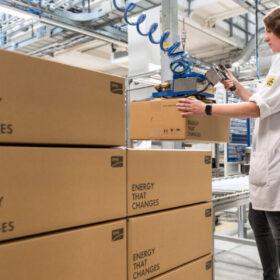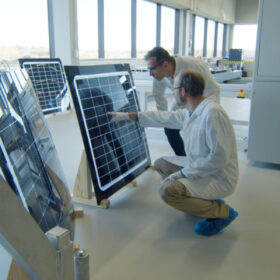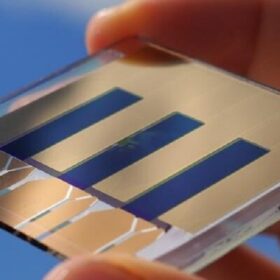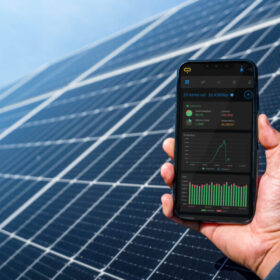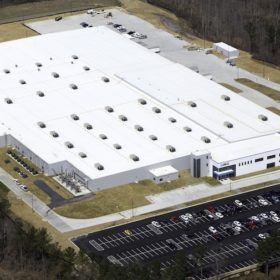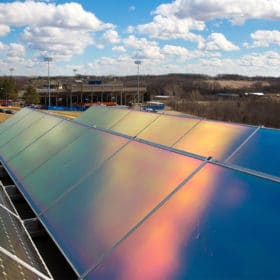Meyer Burger and Solestial aim to conquer space
The companies want to develop cost-effective and efficient photovoltaic products for space applications using next-generation, ultra-thin, radiation-resistant solar cells. Starting next year, hundreds of vehicles for space travel could be equipped with the flexible modules.
Meyer Burger set to begin production at U.S. module factory
The relocation of the photovoltaic manufacturer’s core business from Germany to the USA is taking shape. Production of heterojunction solar modules is starting and financing for a new cell plant is progressing.
ITRPV says solar module prices fell 50% in 2023
The new edition of the International Technology Roadmap for Photovoltaic (ITRPV), published this week, reveals that the world’s installed PV capacity reached 1.6 TW at the end of last year. The learning curve, which reflects average module prices relative to cumulative shipments, is 24.9% for the period from 1976 to 2023.
SMA to build 3.5 GW inverter factory in U.S.
SMA Solar Technology AG says it will open a new 3.5 GW inverter factory at an unspecified location in the United States in 2025. The German manufacturer is currently talking with several U.S. states and potential partners to select the best production site.
Imec integrates silicon heterojunction solar cells into curved surfaces
Imec has successfully integrated silicon heterojunction PV cells into curved surfaces, resulting in a 6% efficiency increase compared to passivated emitter and rear contact half cells. The cells are suitable for applications in vehicle-integrated and building-integrated photovoltaics.
Fraunhofer ISE unveils 15.8%-efficient organic solar cell
Germany’s Fraunhofer ISE has achieved a world record efficiency for organic cells at the lab level. It now aims to bring the PV technology to market maturity.
New performance guarantee for photovoltaic power plants from Raicoon
Based on an AI-supported platform, the Austrian company promises automated operation of photovoltaic systems in which all errors are detected and error alarms are excluded. Munich Re secures the guarantee.
Ikea bets on Meyer Burger’s heterojunction solar modules
Between 2025 and 2029, the investment company of the Swedish furniture group will purchase solar modules produced in the U.S. by the Swiss photovoltaic manufacturer. The agreement is the basis for Meyer Burger to increase annual production capacity at its Arizona site to around 2 GW.
U.S. Patent Trial and Appeal Board rules in favor of Q Cells in patent dispute with REC
The Board issued a favorable decision for Hanwha Q Cells over REC Solar’s patent claims. The court has ruled that the contested claims of REC’s U.S. patent were not patentable. The decision is similar to those in courts in China and Europe, according to Q Cells.
Global solar capacity additions hit 268 GW in 2022: BNEF
BloombergNEF solar analyst Jenny Chase says 268 GW of new solar capacity came online in 2022, with annual installations expected to hit 315 GW in 2023.




